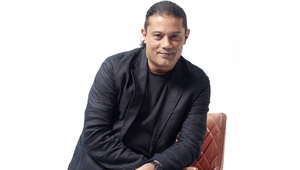
Goafest 2025: Paritosh Srivastava Remains Bullish on India’s Advertising and Creative Landscape

Paritosh Srivastava, CEO of Saatchi & Saatchi India, BBH India and Saatchi Propagate is clear-eyed about the future of creativity, technology and India’s fast-evolving business landscape. “AI isn’t the enemy of creativity,” he says. “It’s the electricity of our age.” For Srivastava, technology is not here to replace creative thought but to supercharge it, part of a much larger transformation affecting Indian advertising.
He sets the stage by highlighting a dramatic shift underway in India’s economy. “Today, India's per capita income is close to 2,000 US dollars, with a GDP of about 4 trillion. In the next six to eight years, we’re going to be about an 8 to 10 trillion economy. When that happens, every person on the street will have double the money in their hand.” That means change and pressure for brands.
“GDP is growing at 6.5 percent, the fastest in the world,” Srivastava continues. “We have a younger population, and in six or seven years, their money in hand is going to double. When that money doubles, which industry do you think is going to be under maximum pressure to innovate and deliver? It’s communication. It’s advertising.”
Currently, India’s ad expenditure is only a fraction of the GDP, sitting at around 130,000 crore. As the economy grows, so will that number and with it, expectations. “In the urban areas, the top 40 cities, we’ll see mega growth,” he says. “Brands will have to find new ways to differentiate.”
Srivastava describes how they are preparing for this future. “We believe in solving business problems through creativity. Our philosophy is ‘Client’s Business is Our Business’. We have an obsession with our clients’ business.”
One of the clearest signals of this approach is talent. “We have created a sophisticated talent pipeline,” says Srivastava. “And we especially, for example, focus on kids who are coming in from Economics, Anthropology, English, Literature. We want to pick up those kinds of kids in the profession.” This is all part of a broader belief that creativity and business must now go hand in hand.
“We are at the intersection of creative excellence and business consultancy,” he says. “If there was an axis on client’s business ownership and one axis on creative excellence, the quadrant on business ownership and creative excellence is the one to be in and we are moving there. We are uniquely positioned to own both.”
A key component of this transformation is the Power of One philosophy. “It allows us to enter a client’s business early on,” he says. “We join hands with them from the start, not just when a campaign is ready to be made.”
Srivastava believes the industry is undergoing a fundamental shift. “There is no other industry that offers the kind of canvas this one does. Younger people have the hunger and this place offers an opportunity to fulfil that hunger.”
Culturally rooted ideas are another essential component of the agency’s approach. “If we want to cut across the country, the idea needs to be culturally rooted,” he says. “The only way you can cut across strata is when the idea comes from culture. It is the unifying thread. Cricket is a religion, Bollywood is a religion you will see a lot of evidence in advertising narratives or brands."
He also points to changing demands on brand leaders. “In this complex environment, the CMO’s job has transformed. We recognise that. With Power of One, it is an end to end solution from strategy to creative to media to data to CRM. The pipeline has been created to solve that problem. We are well positioned to be the closest friend to the client.”
With platforms like Captive8, Publicis Groupe has also carved out a strong position in influencer marketing. “We are supremely powerful in this space,” he adds.
Srivastava is confident about where Saatchi & Saatchi India fits into the market. “We are a category of one. We are uniquely positioned in this country to plan for the growth that’s coming in India.”
As India accelerates towards becoming one of the world’s largest economies, the expectations on creativity, business integration and cultural fluency will only increase. In that environment, AI may not just power our devices, it may power our ideas too.












